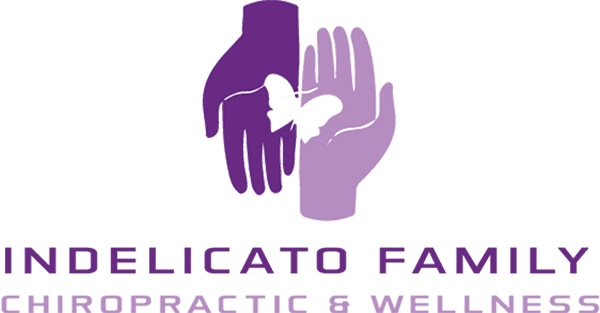
,
This is a placeholder for the Yext Knolwedge Tags. This message will not appear on the live site, but only within the editor. The Yext Knowledge Tags are successfully installed and will be added to the website.
Blog Layout
Whiplash Injury from Auto Accident in Bradenton, FL
7014820204 • February 18, 2025
Whiplash Injury in Bradenton, FL - What is the best treatment?

What is a Whiplash Injury?
One of the most common injuries from car accidents, symptoms of whiplash can take hours or days to appear. Chiropractic care can be particularly effective for treating whiplash by realigning the spine and reducing inflammation.
Whiplash is a neck injury that commonly occurs due to a sudden, forceful back-and-forth movement of the neck, similar to the cracking of a whip. Here's a detailed overview:
Causes:
Motor Vehicle Accidents: The most common cause, where the head is suddenly jolted forward and then backward.
Sports Injuries: Contact sports can lead to whiplash through sudden impacts or tackles.
Physical Assault or Abuse: Any violent act that involves shaking or pushing can cause whiplash.
Amusement Park Rides: High-speed or abrupt motion rides can sometimes result in whiplash.
Symptoms:
Neck Pain and Stiffness: Often the first and most prominent symptom.
Headaches: Starting at the base of the skull.
Dizziness: Due to the disruption of the neck's normal function.
Fatigue: From the strain on neck muscles.
Tingling or Numbness: In the arms, indicating possible nerve involvement.
Blurred Vision: Sometimes due to the impact on the neck muscles and nerves.
Memory or Concentration Problems: Less common but can occur.
Mechanism:
Hyperextension and Hyperflexion: The neck rapidly moves into extension (backward) and then into flexion (forward), stretching and straining the muscles, ligaments, and tendons of the neck.
Diagnosis:
Physical Examination: Checking for tenderness, range of motion, and reflexes.
Imaging: X-rays or MRI might be used to rule out fractures or disc injuries but aren't always necessary for diagnosing whiplash itself.
Most Common Treatment:
Rest and Activity Modification: Initially, to avoid further strain.
Ice/Heat Therapy: Ice for the first couple of days to reduce swelling, followed by heat to promote healing.
Pain Medication: Over-the-counter or prescribed for pain relief.
Physical Therapy: To restore range of motion, strength, and flexibility.
Chiropractic Care: Can be beneficial for adjusting misalignments caused by the injury.
Neck Braces: Sometimes recommended in the acute phase to stabilize the neck.
Recovery:
Recovery time varies; many recover within a few months, but some might experience chronic symptoms.
Early intervention can significantly impact the healing process and prevent long-term issues.
Prevention:
Proper Headrest Adjustment: In cars, headrests should be positioned to support the head and neck properly.
Seat Belts: Worn correctly, they can help prevent some whiplash injuries.
Awareness in Sports: Techniques to reduce impact in contact sports can be taught.
Whiplash can range from mild to severe, and while most people recover well, it's important to take symptoms seriously and seek appropriate medical and/or chiropractic attention to manage and treat the injury effectively.
Contact our clinic immediately if you or a loved one are involved in an auto injury from an accident.

By 7014820204
•
February 21, 2025
Car Accident? Chiropractic care can help best for low-impact injuries! Alright, let’s dive deeper into the world of chiropractic care for car accident injuries with some lesser-known facts and insights. Did you know that chiropractors don’t just crack backs—we are detectives of the musculoskeletal system, piecing together clues from your body that might not show up on an X-ray? After a car accident, injuries like whiplash or soft tissue damage can be sneaky. The adrenaline rush post-crash can mask pain for hours or even days, tricking you into thinking you’re fine when you’re not. Chiropractors are trained to spot these hidden issues—think micro-tears in ligaments or subtle spinal misalignments—that could turn into chronic problems if ignored. Here’s a wild tidbit: a 2015 study in the Journal of Orthopaedic & Sports Physical Therapy found that early manual therapy (like what chiropractors do) after a car accident can cut recovery time for neck pain by nearly half compared to just waiting it out or popping painkillers. The trick is timing—getting in within a week or two can make a huge difference because it stops inflammation from settling in like an unwelcome houseguest. Chiropractors use hands-on techniques, like spinal adjustments or myofascial release, to kickstart your body’s natural healing. Ever heard of the “tensegrity” model? It’s this cool concept we lean on—your body’s like a tent, with bones as poles and muscles as ropes. If one rope’s too tight from a crash, the whole structure’s off, and we work to rebalance it. Another fun fact: whiplash isn’t just a neck thing—it can mess with your jaw, shoulders, even your balance, because it rattles the nervous system. Chiropractors might use something called an “activator,” a little spring-loaded tool, to gently nudge things back into place without the dramatic twist-and-crack you see in viral videos. And get this—some research, like a 2020 paper from Spine Journal, suggests chiropractic care can lower the odds of needing opioids for accident-related pain by up to 60%. That’s huge when you consider how many folks get hooked on pills after a wreck. Want specifics on how we treat? Beyond adjustments, we might throw in cold laser therapy or other modalities to zap inflammation or prescribe oddball exercises—like standing on one leg with your eyes closed—to retrain your brain-body connection after a jolt. We’re checking stuff like your cervical range of motion (how far your neck turns) or palpating for trigger points—knots that scream “ouch” when pressed. It’s less about brute force and more about precision, like tuning a guitar string just right. If you or a loved on are injured in a car accident, please don't hesitate to contact my team to help you figure out the best plan possible to get you back on track to feeling & functioning your best again.

By 7014820204
•
February 18, 2025
Traumatic Brain Injuries (TBI) in Car Accidents: Understanding the Impact Did you know that motor vehicle accidents are responsible for causing 20-50% of all TBIs? These injuries can vary from mild concussions to severe, life-altering conditions. Shockingly, many TBIs remain undetected in the crucial days or weeks post-accident, leading to avoidable long-term consequences. **Risks Associated with Undiagnosed TBI:** - Memory Challenges: Struggles with information retention and focus. - Chronic Pain: Manifesting as headaches and other neurological issues. - Emotional Shifts: Including anxiety, depression, and mood fluctuations. - Delayed Recovery: Insufficient treatment can exacerbate symptoms progressively. **The Significance of Early Diagnosis:** Timely identification enables healthcare professionals to create a tailored recovery strategy addressing physical, cognitive, and emotional manifestations, reducing the likelihood of enduring complications. **Supporting Research:** - A study in The Journal of Neurotrauma underscores how even minor TBIs can result in lasting neurological deficits if not promptly addressed. - Research in Frontiers in Neurology stresses the critical role of early intervention in averting chronic post-concussion syndrome. - The Journal of Head Trauma Rehabilitation highlights that many TBI patients may initially feel fine post-accident, only to encounter debilitating symptoms later on. If you or a family member has been in a car accident, it's crucial not to delay. Seek a professional evaluation without delay, even if you feel well. Your health and quality of life are invaluable. If you require assistance, we specialize in post-accident care, including TBI screenings. Contact us today to ensure you're on the path to recovery.
VISIT US
,
This is a placeholder for the Yext Knolwedge Tags. This message will not appear on the live site, but only within the editor. The Yext Knowledge Tags are successfully installed and will be added to the website.
This is a placeholder for the Yext Knolwedge Tags. This message will not appear on the live site, but only within the editor. The Yext Knowledge Tags are successfully installed and will be added to the website.
HOURS
This is a placeholder for the Yext Knolwedge Tags. This message will not appear on the live site, but only within the editor. The Yext Knowledge Tags are successfully installed and will be added to the website.
HOURS
This is a placeholder for the Yext Knolwedge Tags. This message will not appear on the live site, but only within the editor. The Yext Knowledge Tags are successfully installed and will be added to the website.
Monday
Tuesday
Wednesday
Thursday
Friday
Saturday
Sunday
This is a placeholder for the Yext Knolwedge Tags. This message will not appear on the live site, but only within the editor. The Yext Knowledge Tags are successfully installed and will be added to the website.
Monday
Tuesday
Wednesday
Thursday
Friday
Saturday
Sunday
This is a placeholder for the Yext Knolwedge Tags. This message will not appear on the live site, but only within the editor. The Yext Knowledge Tags are successfully installed and will be added to the website.
CONTACT US
This is a placeholder for the Yext Knolwedge Tags. This message will not appear on the live site, but only within the editor. The Yext Knowledge Tags are successfully installed and will be added to the website.
Hi. Do you need any help?
Privacy Policy
| Do Not Share My Information
| Conditions of Use
| Notice and Take Down Policy
| Website Accessibility Policy
© 2025
The content on this website is owned by us and our licensors. Do not copy any content (including images) without our consent.




Share On: